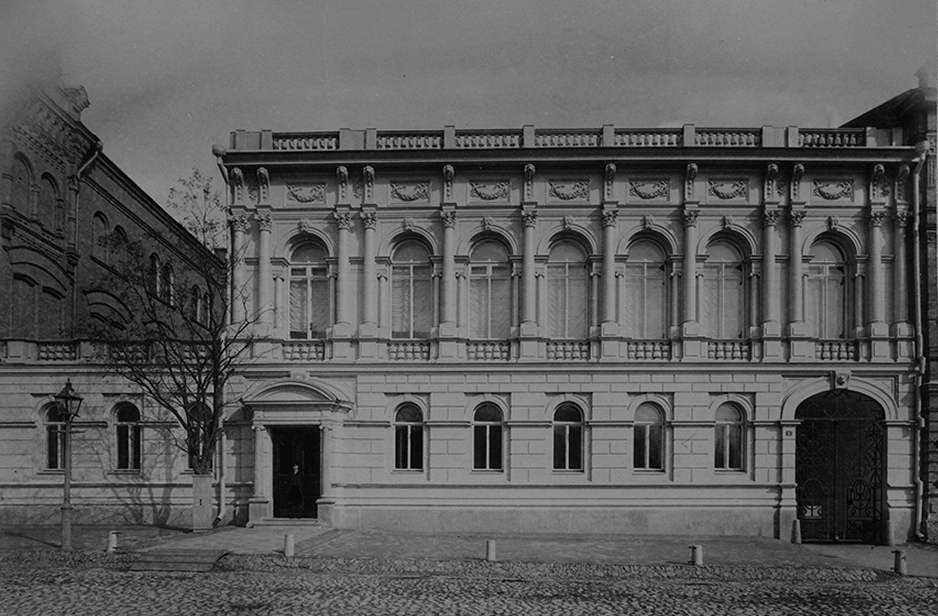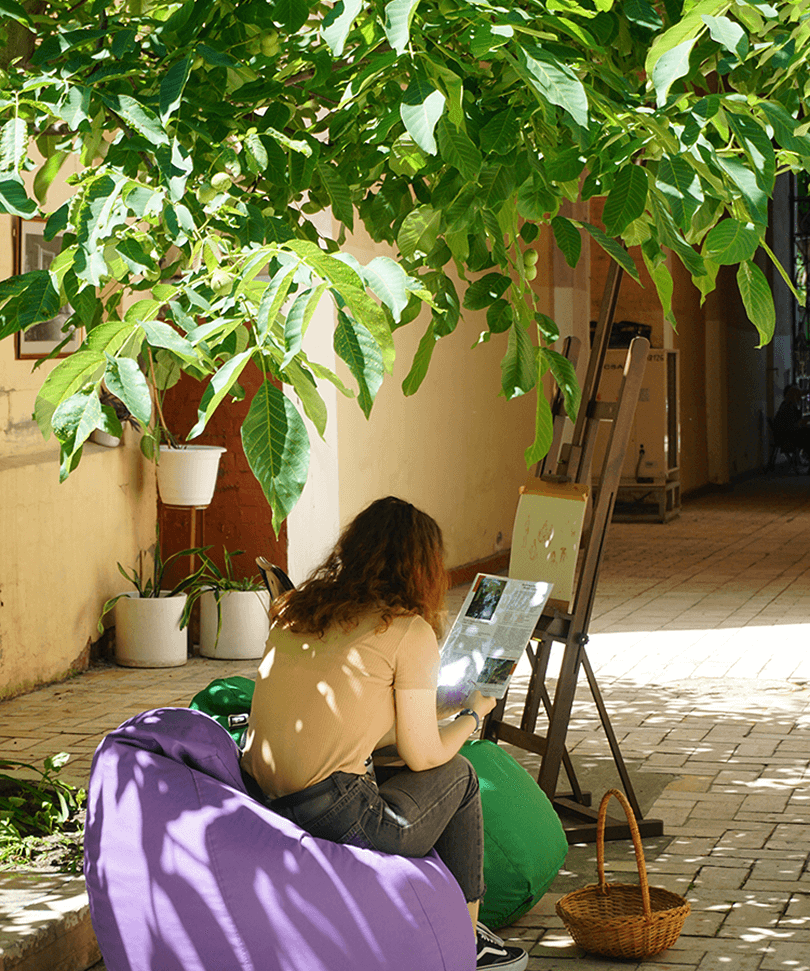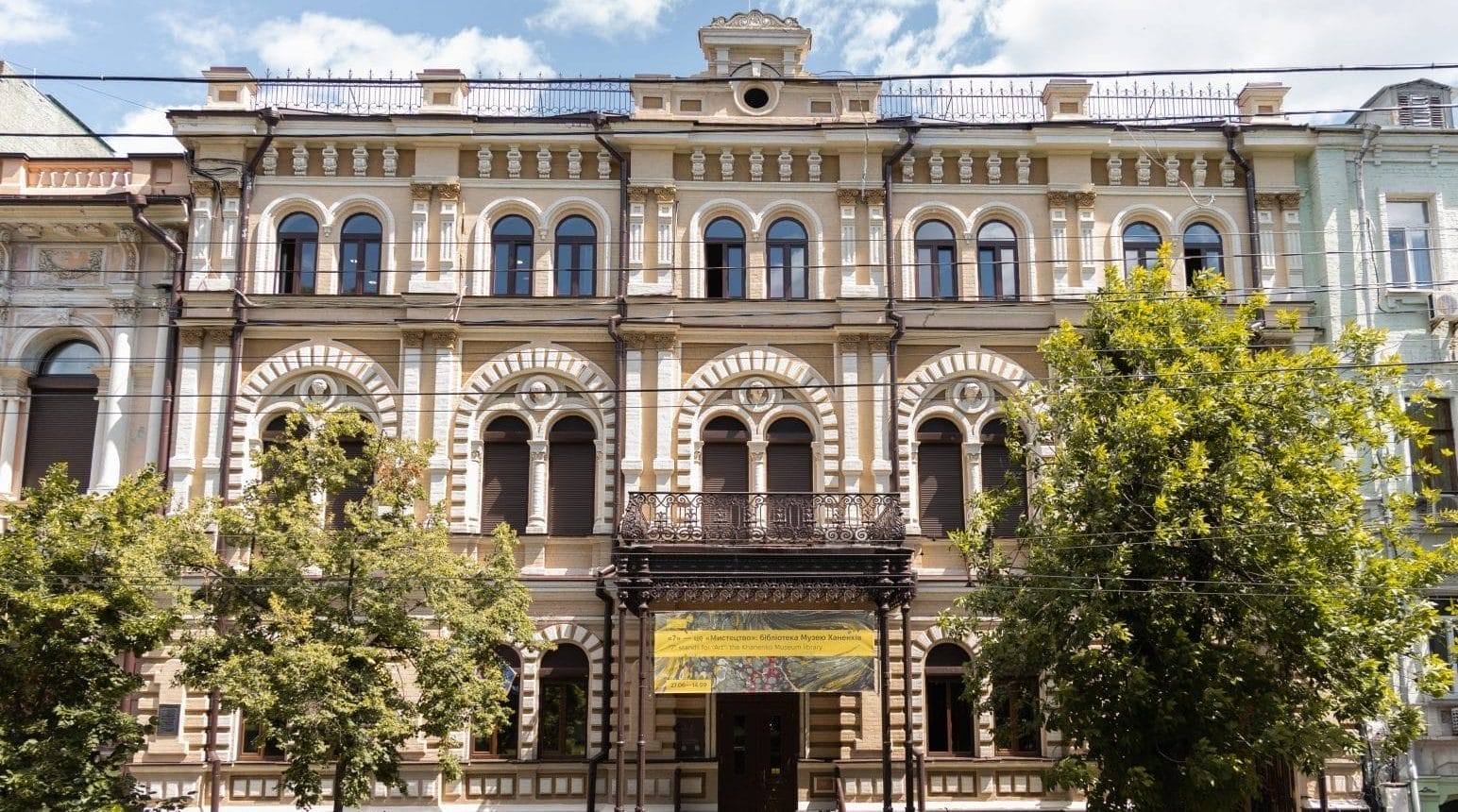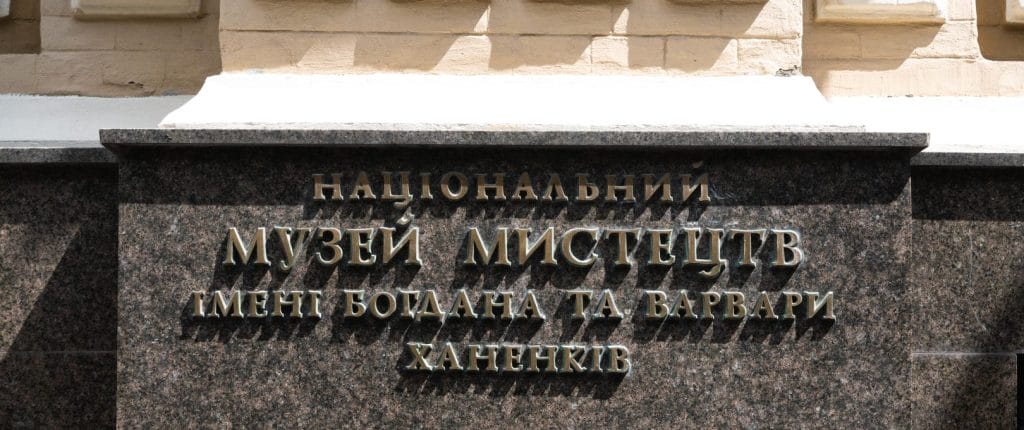
The Khanenko Mansion
The history of the Khanenko mansion dates back to the early 1880s, when sugar manufacturer Nikola Tereshchenko, Varvara Khanenko’s father, purchased a large plot of land with a house on a new street in Kyiv, Oleksiivska Street. Between 1882 and 1888, another house was built on the vacant part of the plot – two stories from the front and three stories from the courtyard. The architect of the project was most likely Robert-Friedrich Melzer (1860–1943). In 1888, Nikola Tereshchenko transferred the newly built house and part of the land plot to his eldest daughter Varvara. In 1891, the Khanenko family completed the left wing of the house (designed by O. Kryvosheyev). Throughout the 1880s and 1890s, they were engaged in the interior design of the premises. Intended for the presentation of an art collection, the house was conceived as a kind of ‘theatre of art history’
The Khanenko family was influenced by the European fashion for historicism in architecture. The interiors of the first and second floors featured original architectural and artistic stylisations in the spirit of a particular historical era. This resulted in ‘Gothic’ and ‘Renaissance’ living rooms, a Rococo-style study, and a Dutch ‘bourgeois’ dining room – unique spaces that document the artistic and intellectual culture of Kyiv at the end of the 19th century. In addition to Robert Melzer, architects Leonardo Marconi and Pyotr Boitsov, artists Wilhelm Kotarbinsky, Mikhail Vrubel, and Adrian Prahov probably contributed to the design of the Khanenko Mansion. In contrast to the artistic sophistication of the front rooms, the Khanenko family’s private quarters on the third (mezzanine) floor were decorated rather modestly, even ascetically.
As archival photos show, the Khanenko private gallery changed its ‘exhibition’ many times, depending on the changing interests of its owners. The presentation of the collection in the halls of the house changed dramatically in the spring of 1919, when, at the request of the Bolshevik authorities, Varvara Khanenko and art historian Georgii Lukomskyi created the first museum exhibition in the nationalised Khanenko house. At that time, an exhibition of Ukrainian folk carpets appeared in the Khanenkos’ Golden Cabinet for a short time. Varvara Khanenko lived in the rooms on the third floor until the end of her life in May 1922.
In 1930-1934, the first thematic exhibition of Islamic art, created by Maria Viazmitina (1896-1994), was held in the Khanenkos’ private rooms on the third floor of the house. During World War II, according to undocumented information, the museum building housed a Nazi officers’ club. The damage suffered by the house during the war prompted the museum management to dismantle part of the historical architectural complexes of the halls. In particular, the interior of the ‘Delft Dining Room’ was lost forever. As a result of major repairs and restoration of the building in 1986-1998, most of the unique Khanenko interiors were restored. The Khanenko family crest once again took its place on the front façade between the windows on the second floor. The main theme of the permanent exhibition in the Khanenko historical house is the fine and applied arts of Europe from the 14th to 19th centuries. In 2004, the theme was expanded: a collection of unique early Byzantine icons from the 6th and 7th centuries was presented in a separate hall. In 2018, an exhibition of ancient art was arranged in the ‘Khanenko’s Office’ on the first floor of the building.
Russia’s full-scale invasion of sovereign Ukraine on 24 February 2022 prompted the museum team to dismantle and secure the permanent exhibitions. Measures were taken to protect the historic buildings of the Khanenkos’ estate. On 10 October 2022, a Russian missile hit a playground next to the museum. The front façade of the Khanenko Mansion: windows, doors, decorative elements, and glass ceilings in the central halls were significantly damaged. Thanks to the immediate assistance of international partners, the integrity of the house was restored. In 2025, with the support of UNESCO, the restoration of the old exterior and interior doors of the house began. Since the summer of 2022, despite the war, exhibitions from private Ukrainian and foreign collections, as well as contemporary art projects, have been held in the halls of the Khanenko Museum.

Museum courtyard
The Khanenko estate consisted of a mansion and outbuildings, including a two-storey servant dormitory and single-storey stables, a carriage house and an ice house, the latter of which have not been preserved. At the centre of the estate was a small but cosy courtyard. In the 1960s, the museum’s director, monumentalist artist Vasyl Ovchynnikov, created mosaics and frescoes on the walls of the rear facade of the Khanenko mansion and the walls of the dormitory, including ‘Kyiv Madonna,’ ‘Self-Portrait,’ ‘Danko’s Heart,’ ‘Stork,’ ‘Magnolia,’ and others. The courtyard is open to visitors and tours during the summer season (May-September) on Saturdays and Sundays.

The Sakhnovskyi House
In 1986, by decision of the Kyiv authorities, the Khanenko Museum was given the building at 17 Tereshchenkivska Street, which until 1918 belonged to the Sakhnovskyi family, close relatives of the Khanenkos. The house was built in 1878 by Adelaide Sulimovska according to a design by architect Vladimir Nikolaev. Three stories high from the street, the house had five stories from the courtyard. The house was originally conceived as a residential property, intended for renting out apartments. The front facade of the house is decorated in an eclectic style with elements of the Neo-Renaissance. Such motifs are particularly evident in the round medallions with delicate sculpted heads that adorn the windows of the second floor, and in the Corinthian columns and pilasters decorating the windows of the second and third floors.
In 1880, telephone service was installed in the house for the first time. The initiative to install a telephone belonged to Alexander Borodin, a prominent engineer and scientist who lived in the house from 1877 to 1884. In September 1882, the house and land were purchased by Nikola Tereshchenko, and in 1899 (or 1900) he gifted the property to his youngest daughter, Yefrosynia, who married into the Sakhnovskyi family. Yefrosyniya’s husband, a descendant of a noble family, doctor of medicine, renowned physician and public figure Volodymyr Sakhnovskyi, was one of the founders of the Society for Emergency Medical Care in Kyiv. The Sakhnovskyi family occupied four apartments on the first, third and fourth floors. The Sakhnovskys owned the house and estate until 1918. After the Bolshevik nationalisation in 1919, the house was used as a residential building. In the second half of the 1930s, rectangular windows were cut into the basement floor.
In 2001-2005, the museum carried out renovation and restoration work of the building, during which the premises on the first and second floors were designed as public spaces. The museum’s administrative and maintenance services are located on the third floor. In addition, an internal passageway was created connecting the Khanenko mansion and the Sakhnovskyi house on the second floor.
In 2006, a permanent museum exhibition, ‘Eastern Collection’ (Asian and Islamic art), was opened in the Sakhnovskyi House. Key non-European collections presented are as follows: ‘Art of Hinduism and Buddhism,’ ‘Art of China,’ ‘Art of Islam,’ and ‘Art of Japan.’ The museum library, exhibition halls, lobby, cloakroom, ticket office, and souvenir shop are located on the first floor of the house.
In February 2022, as a result of the Russian Federation’s full-scale war against sovereign Ukraine, the museum dismantled its permanent exhibitions and secured its collection. Since the summer of 2022, the museum has been presenting exhibitions from private collections and contemporary art projects in the historic Sakhnovskyi Mansion. In 2024, a museum co-working space was organised on the first floor of the house, with plans to organise a public reading room on the history of world art in the future.
Hanna Rudyk
